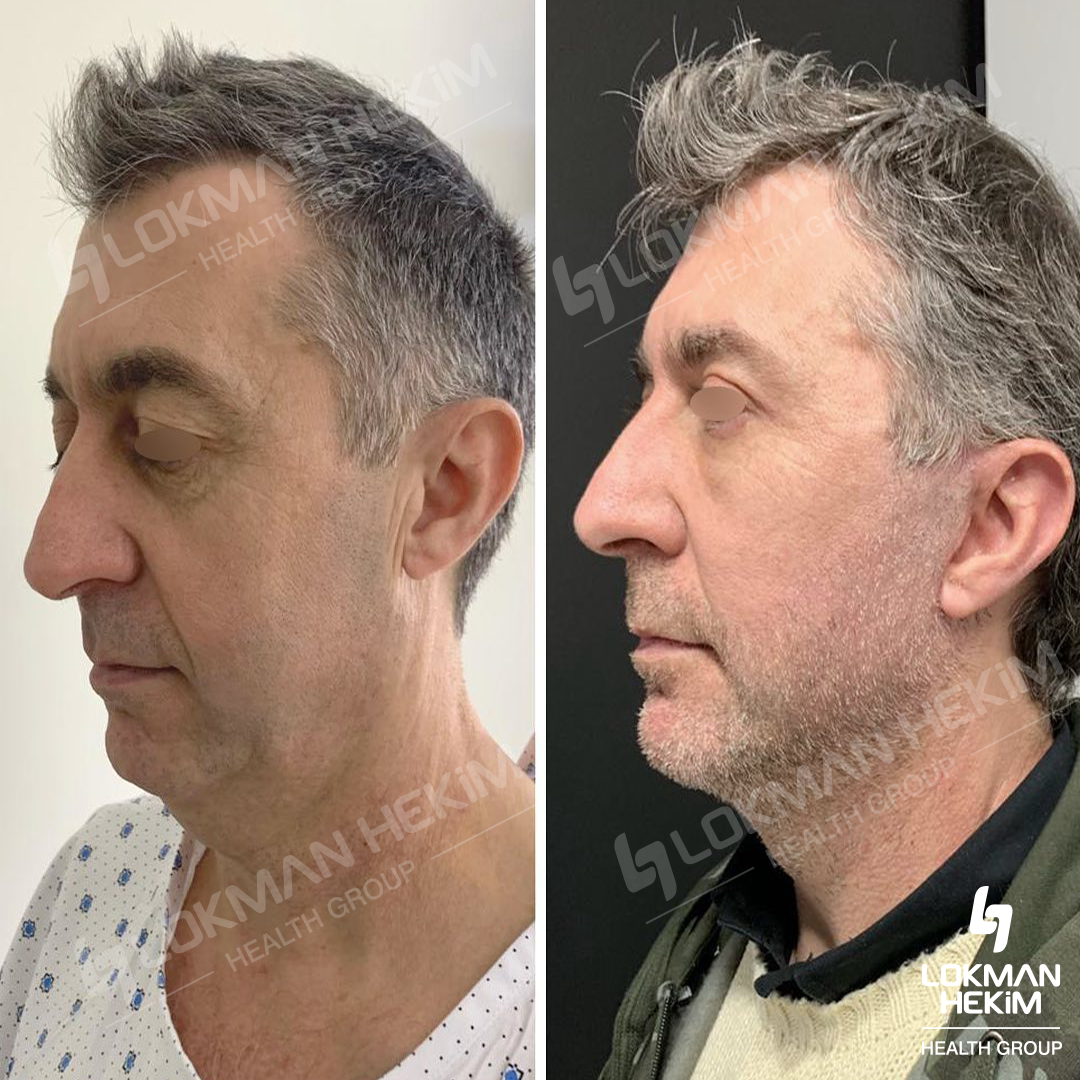Quote of Lokman Hekim
What is a Facelift?
A facelift, or rhytidectomy, is a cosmetic procedure that tightens and lifts sagging facial skin, smoothing wrinkles, and restoring youthful contours. It helps in dealing with the visible signs of aging in the mid to lower parts of the face and the neck and is helpful in rejuvenating one's appearance.
How the Procedure Works
A facelift may be done under general anesthesia or sedation, by making small incisions along the hairline and around the ears. The surgeon lifts and tightens underlying muscles and tissues, repositions fat, and removes the extra skin to provide a smooth, well-defined appearance. The surgery generally takes 2-4 hours.
Ideal Candidates
Candidates for a facelift are individuals with drooping skin, deep grooves, or jowls on and around the face and neck. Ideally, to achieve good results, one should be healthy, a nonsmoker, and have reasonable expectations about the result.
Types of Facelifts
Full Face Lift: This is a procedure that covers the entire face, including the neck and jaw line.
Mini Facelift: This is less invasive. It addresses mild to moderate sagging of the lower face area.
Mid-Facelift: Highlights the cheeks and midface area where sagging occurs at the region of the nose and mouth.
Recovery and Aftercare
The initial recovery after having a facelift is about 1-2 weeks. The swelling and bruising will wear off with time. The patients must avoid strenuous activities for this time period and religiously follow aftercare as advised by their operating surgeon, such as sleeping with propped-up heads. Full healing may be several months in achieving, but results are more observable as the swelling goes down.
Facelift-Advantages
Restored Youthfulness: Stretches sagging skin and lifts it for a smoother look and a more youthful appearance.
Improved Contours: Accentuates the jawline, smoothes out wrinkles, enhancing facial harmony.
Long-Lasting Results: The results of a facelift may last for many years if properly taken care of.
Boosted Confidence: Many patients feel fresher and confident after treatment.
Possible Risks
As with all surgeries, risks include scarring, infection, temporary numbness, and, rarely, asymmetry. Many of these risks can be minimized by an experienced surgeon and post-operative care.
A facelift offers a tremendous opportunity for anyone wishing to appear young and refreshed. Since different techniques are available, the procedure can be tailored to suit the needs of the individual. This procedure can provide natural results that will last for a certain period of time.
- Abdominal liposuction
- Arm Lift (Brachioplasty)
- Back Liposuction
- Blepharoplasty (Eyelid Surgery)
- Brazilian Butt Lift (BBL)
- Breast Augmentation
- Breast Augmentation with Tear Drop Implants
- Breast Correction
- Breast Implant Removal
- Breast Implants With Breast Lift
- Breast Lift
- Breast Reconstruction
- Breast Reduction
- Brow Lift
- Buccal Fat Extraction
- Butt Implants
- Buttock lift
- Buttock Reduction
- Cheekbone Reduction
- Chin Implant
- Health Insurance
- Online Healthy Life Assistant 9/5
- Post - Experience Follow Up 6 Month
-
Extra Privileges
No suitable hotel found for the relevant dates!
- Health Insurance
- Online Healthy Life Assistant 24/7
- Post - Experience Follow Up 1 Year
- Pre-Treatment Doctor Consultation
-
Extra Privileges
No suitable hotel found for the relevant dates!
 Private
Private
- Health Insurance
- Healthy Life Butler
- Post - Experience Follow Up 2 Year
- World-Famous Doctor Consultation
-
Extra Privileges
No suitable hotel found for the relevant dates!
* Price varies depending on extra and upgrade selections.
A facelift is more technically known as Face lift, one of the popular cosmetic surgeries that reduce the effects of aging in wrinkle and skin sag. Generally, in the surgery of a facelift, a surgeon removes extra facial skin and tightens the skin on each side of the face through the incisions behind the ears. Commonly, surgeons are doing a facelift along with a neck lift, and they may combine another procedure along with a facelift: eyelid surgery.
Whereas different techniques are applied and individual requirements differ, the length of the surgery generally ranges from 2 to 5 hours.
This will vary from person to person, but in the initial days, one may have swelling and bruising. One should be advised to limit activities until recovery and should follow recommendations made by one's doctor.
The age factor is mainly 45 and above for the classical facelift surgeries, though the younger ones may be more suitable for endoscopic operations. This technique is only advisable for people with sagging skin and wrinkles on their skin. Yet, one needs to remember that not every person is suitable for undergoing the operation.
Facelift surgeries are solely performed by plastic surgeons in a hospital and usually under general anesthesia. The size of the incision to be made depends on the type of facelift to be performed: a mini facelift, endoscopic, or classic facelift. Following the incision, the surgeons proceed to eliminate excess skin and enhance facial tightness by lifting and securing the skin. The incisions are then closed using either sutures or specialized skin adhesives. Post-surgery, a hospital stay of two days is customary. Throughout this recovery period, a drainage tube is usually inserted under the skin to collect blood and fluids. The removal of this tube takes place before the patient is discharged from the hospital.
Antibiotics normally continue for at least five days following a facelift. Sutures are frequently removed within ten days. Over this period, one has to make use of some special wound creams recommended by the doctor. Post facelift surgery, common experiences include bruising, swelling, tightness, and numbness. The sensations of tightness and numbness are expected to diminish within a week, while bruising and swelling may persist for up to a month.
The aging process is continuous, whereas the facelift is a surgical interference. The results are not permanent; it depends upon your dedication to good health.
In a facelift, incisions are made behind the ears and placed carefully inside the natural folds to hide them as much as possible. After surgery, these incisions will barely be visible. With good wound care and a good healing process, scarring from the latter might be at a minimum and sometimes barely visible, adding to a cosmetically acceptable result.
Generally patients needs to stay 1 week to 10 days in Turkey.






